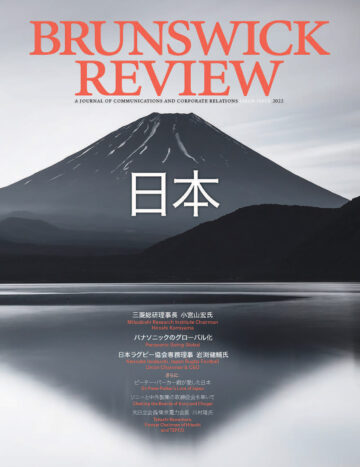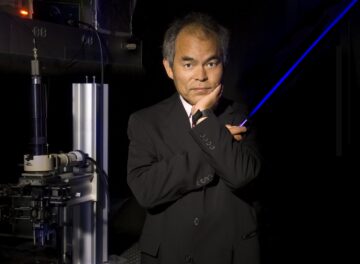The country’s quiet approach to cross-border investment is changing. Brunswick’s Matthew Brown spoke with two experts in Japan’s M&A activity: RPC Partner Nigel Collins and southgate co-founder Mangyo Kinoshita.
Japan’s social culture has colored its business activities for generations, and helped make its manufacturing sector in particular a huge success.But that culture of doing business is evolving—quickly, by Japanese standards—as a result of a combination of international influences, pressures from investors and government regulators and a shifting global economy.
In particular, the country’s international merger and acquisition activity and investments abroad, which were almost entirely halted during the 2020 as a result of the pandemic, are returning to life. Investors are expecting a surge in deals along with subtle changes in the way Japanese leadership conducts business. Pressures at home from an aging workforce and a declining population, along with pressures to create a green economy, are generating a mounting sense of urgency to demonstrate new robust growth to shareholders and investors.
To gain some insight into the current outlook and appetite for cross-border M&A in Japan, Brunswick Director Matthew Brown sat down in February with two lawyers who are experts in the space. Nigel Collins is a corporate M&A partner specializing in Japanese business in the UK and Europe at Reynolds Porter Chamberlain (RPC), a leading full service corporate law firm based in London. Mangyo Kinoshita is licensed to practice law in Japan and California, and spent 15 years at international firms in Tokyo and New York before co-founding the Tokyo-based firm southgate in 2016 to focus on cross-border M&A and investment activity.
Collins and Kinoshita are colleagues in the field and have worked together on transactions. Between them, they’ve been involved with hundreds of international deals and investments involving Japanese companies as acquirers or targets, including some currently under way.
Japan has seen record levels of outbound M&A in recent years and a lot of it is attributed to Japanese companies going overseas for growth due to a shrinking market back home. What are the forces behind that trend and what impact has the pandemic had?
Nigel Collins: The two big trends are midsize corporates following the larger Japanese corporates overseas and a big drive into the green economy. If you go back 10 years, a lot of that M&A was in the manufacturing sector. What I’ve seen over the last 10 years is many of the big Japanese corporates—the global corporates like the big Japanese banks and the insurance companies, the big manufacturing organizations like Hitachi and the trading houses, businesses such as Itochu, Mitsui, Sumitomo—they’ve gone out and done a lot of M&A all over the world. And then in typical Japanese fashion, a lot of midsize companies have followed. These midsized companies are still very big companies in the context of UK and European markets.
Now, we’re also seeing a big drive into the green economy. This is accelerating the diversification away from the traditional manufacturing-type M&A transactions. There’s also been a wave of restructuring.
Domestic deals remained very active last year. But as a result of the pandemic, with outbound M&A, the number of deals decreased 32.6%. As a whole, deal value went down by almost 60% last year.
“We’re seeing a big drive into the green economy. This is accelerating the diversification away from traditional manufacturing-type M&A transactions.”
Mangyo Kinoshita: When the Lehman crisis hit in 2008, Japanese companies were a strong player in the global market, injecting a huge amount of cash. But I think the situation has changed slightly in the past 10 years. Japanese companies have a strong cash position, but we haven’t seen that same level of huge deals. In the Lehman situation, the number of outbound deals remained strong. When COVID hit, a lot of outbound deals stopped.
We are now working on a lot of minority investments, involving venture capital arms of big Japanese listed companies. For a long while, M&A had been their primary means of expanding their businesses overseas, but corporate venture capital has become another path to overseas expansion. We’ve observed the trend during the last five to 10 years of Japanese companies outsourcing more R&D to startups and attempting to create new synergies with those emerging companies. In this way they’ve diversified their investment strategy and R&D strategy. And with the perceived risk of acquisitions during the COVID crisis, minority investments seem a less risky alternative to M&A.
NC: Traditionally, Japanese companies on the whole are more comfortable initially making a minority investment. Once the relationship has been strengthened, a Japanese company feels more comfortable taking a bigger step by acquiring a majority equity stake or buying the business outright. The North American/European model tends to be more aggressive—buy and if it doesn’t work, then you sell.
How has outbound M&A fared under COVID?
NC:We were very fortunate that we had four or five important M&A transactions or investments that continued as we were already so far into the deal that the parties were comfortable to complete them. But, on the whole, Japanese corporates stopped investing almost completely. Leadership was saying, OK, let’s see what happens on a macro and a micro level before we decide what we’re going to do next.
With no new investments or M&A transactions, and after closing ongoing transactions, we started to advise on a number of restructurings. Some of these were existing businesses based in the UK or in Europe—a retail business, for example, that had to close all its stores. At the same time, there was a lot of restructuring of minority investments.
There was an opportunity to use the cash on their balance sheets to acquire undervalued or distressed assets, but that didn’t happen. Is that something we might we see after the pandemic?
NC: Japanese companies traditionally don’t like to buy distressed businesses and turn them around. They’d rather buy a business that’s already performing and has a strong management team in place. On the other hand, Japanese companies are well placed to help drive global M&A coming out of this pandemic—one of the best-positioned countries. There is increasing pressure for them to use M&A as a strategy to grow—saturated markets at home, declining population and pressure not just from the government but from banks and insurance companies to go out and chase M&A and make these acquisitions.
But they’ll always be careful about the targets that they select.
What do you think is behind that cultural hesitancy to go and acquire distressed assets?
MK: Japanese companies do not have a strong track record with post-merger integration, so integrating and rehabilitating a floundering business from a distance is a real challenge for Japanese companies. If they buy good assets or companies that are growing, they can grow together with less effort and expenditure of resources.
NC: Culturally as well, Japanese society is a consensus-based society. It’s not a society where corporates are comfortable dealing with the conflict that comes with buying a business that needs to be turned around. In those situations conflict is inevitable.
What role does communication play in how outbound M&A from Japan is perceived?
NC: Communication is key. While it’s not something unique to Japan, there are a lot of Japanese corporates that would benefit greatly from a communication strategy that not only gets the right messages out to shareholders, but also to the target business, its management and internally back in Japan.
I’ve seen plenty of situations in the past where a Japanese corporate would buy a business and the target’s management team in Europe would sit there after the transaction looking to Japan and saying, well, what do you want us to do? And Japan would say, well, just carry on as normal. That kind of lack of communication has and will always cause issues.
However, I think Japanese corporates are getting better at communicating these days.
“Japanese companies are well placed to help drive global M&A coming out of this pandemic. There is increasing pressure for them to use M&A as a strategy to grow.”
Over a third of Japanese M&A deals end up in write-offs or divestments, compared with about 5% from the US. Why do you think that is?
NC: Traditionally, Japanese companies would prop up an underperforming business through intra-group loans. Internally, with internal politics, it can be difficult to simply dispose of the business. You often hear stories that Japanese corporates have overpaid for a business, but I’ve seen that change over the last few years. If you could go forward even 10 years, I’d expect to see those numbers regarding write-offs come down. It takes time for them to decide to sell or restructure the business, but I’m seeing that lead time come down.
How does a Japanese CEO’s approach to an M&A deal differ from their counterparts in Europe or the US?
MK: When we look at companies like SoftBank or Fast Retailing, they are led by founders and strong entrepreneurs. A lot of Japanese companies with those sorts of CEOs have been very active and very successful in the global market. That’s a recent phenomenon. Traditionally it was mostly car manufacturers that were the big players. But now we’ve started to see some strong Japanese CEOs willing to engage in challenging M&A. On one occasion with a mid-cap company going outbound, the CEO led the whole deal and directly negotiated with the target, flew to the target jurisdiction by himself. We all joined a meeting remotely, but the CEO was the only person there in the room. Right after the deal was announced, he stepped down from the CEO position and became the person responsible for the post-merger integration. We’re starting to see that type of strong leadership and passion about the business that they are buying. So, I’m very optimistic about the future of Japanese M&A.
NC:I think the gap between the kind of traditional Japanese style of CEO and Western CEO is narrowing. There are a couple of trends I’ve seen in recent years. One is that large Japanese corporates have been bringing in investment bankers and professionalizing their M&A teams. That drives a more international approach. Midsize corporates will follow that over time. These more professional M&A teams have a lot of influence these days on strategy, execution and post-merger integration.
The second trend is where talented people have been sent abroad to gain international experience, they are returning and now being given the opportunity to influence the company at headquarter level in Japan. Historically, some of these returnees were less influential. I see that in some larger companies these people are now exerting real influence on strategy and business practices, bringing in a lot of international knowledge. Japanese corporates are much more open these days to taking advantage of this knowledge and helping to narrow the gap between the very traditional Japanese CEO and the more hands-on Western CEO.
Do you see any particular M&A trends in the domestic Japanese market?
MK: Hostile M&A is a trend we’ve seen grow in Japan in recent years. In Japanese, it used to be called the “hagetaka approach” (vulture fund approach) and it wasn’t viewed favorably. If a company is labeled as being prone to taking such an approach, its competitors, customers and suppliers may not feel comfortable dealing with them. But now, a lot of Japanese companies are engaged in what once would have been called a hostile situation but is actually closer to an unsolicited approach—they’re often making a well-considered proposal. Targets can no longer simply say, as they might have done in the past, “we don’t want to entertain this proposal because it is hostile.” Improvements in corporate governance and investor pressure make this stance untenable today and this trend of “hostile” takeovers in Japan will likely continue.
What are the trends in the push for green economy?
NC: Some of the trading houses have been busy selling interests in mining and fossil fuel businesses and refocusing their strategy. This is accelerating. Large corporates like Mitsubishi Heavy Industries and Toshiba have stated that over the next five to 10 years they’re going to be making investments, acquisitions, committing to more R&D spend and deploying new technology to decarbonize industry. I’ve seen and been involved in a number of Japanese investments in Europe, from the R&D sector all the way up to much larger investments into businesses across the green economy. There’s a lot of activity in green and blue hydrogen, ammonia, carbon capture, battery storage and those types of investments. One of the challenges for Japan Inc is finding the right opportunities and partners as this is a hot market with increasing valuations and tough auction processes to navigate, favoring fast movers and big spenders.
More from this issue

The Japan Issue
Most read from this issue

Turn on the Power




